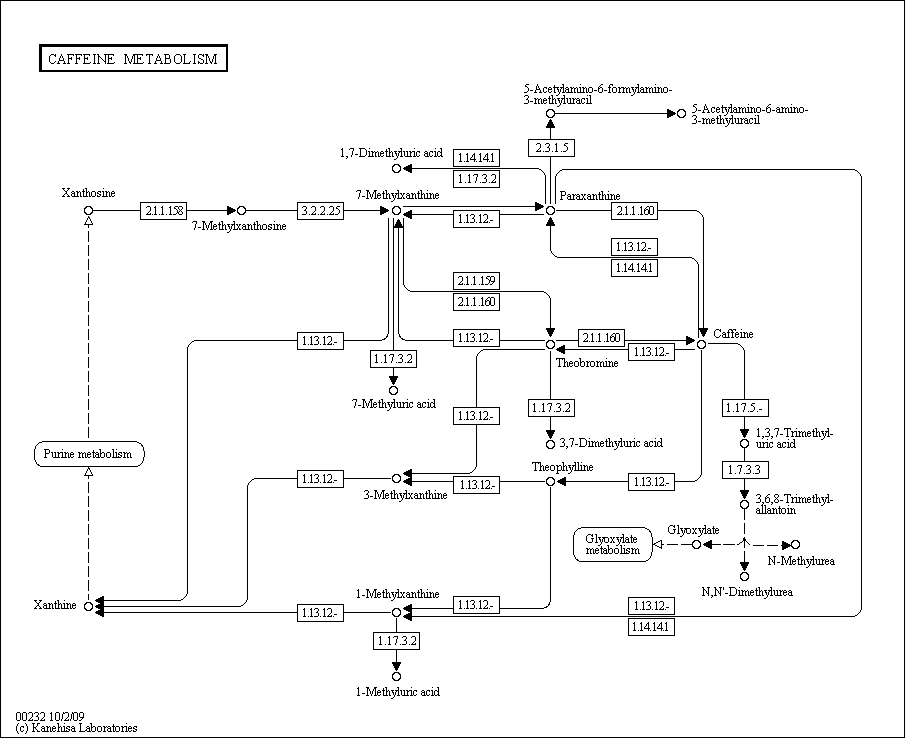Caffeine Metabolism
Description: Caffeine is the world's most commonly consumed psychoactive substance. Upon entering the body, caffeine is able to permeate all biological membranes without exception. It easily enters the bloodstream and has no problem crossing the blood brain barrier. Once within the brain, caffeine acts as a nonselective stimulant on adenosine receptors leading to its stimulating effects.
In humans, the liver metabolizes caffeine into four different substances. The molecule Cytochrome P450 (primarily isoform 1A2) performs different reactions on caffeine to produce these four metabolites:
1-N-demethylation to Theobromine (7-8%)
3-N-demethylation to Paraxanthine (70%)
7-N-demethylation to Theophylline (7-8%)
C-8 hydroxylation. To 1,3,7-Trimethyluric acid (15%)
The average half-life of caffeine in a healthy adult is 4-5 hours, but can vary greatly depending on age, weight, liver function, concurrent medication, as well as other factors.

Related BMRB Molecules
For complete information about pathway, see KEGG [map00232]
